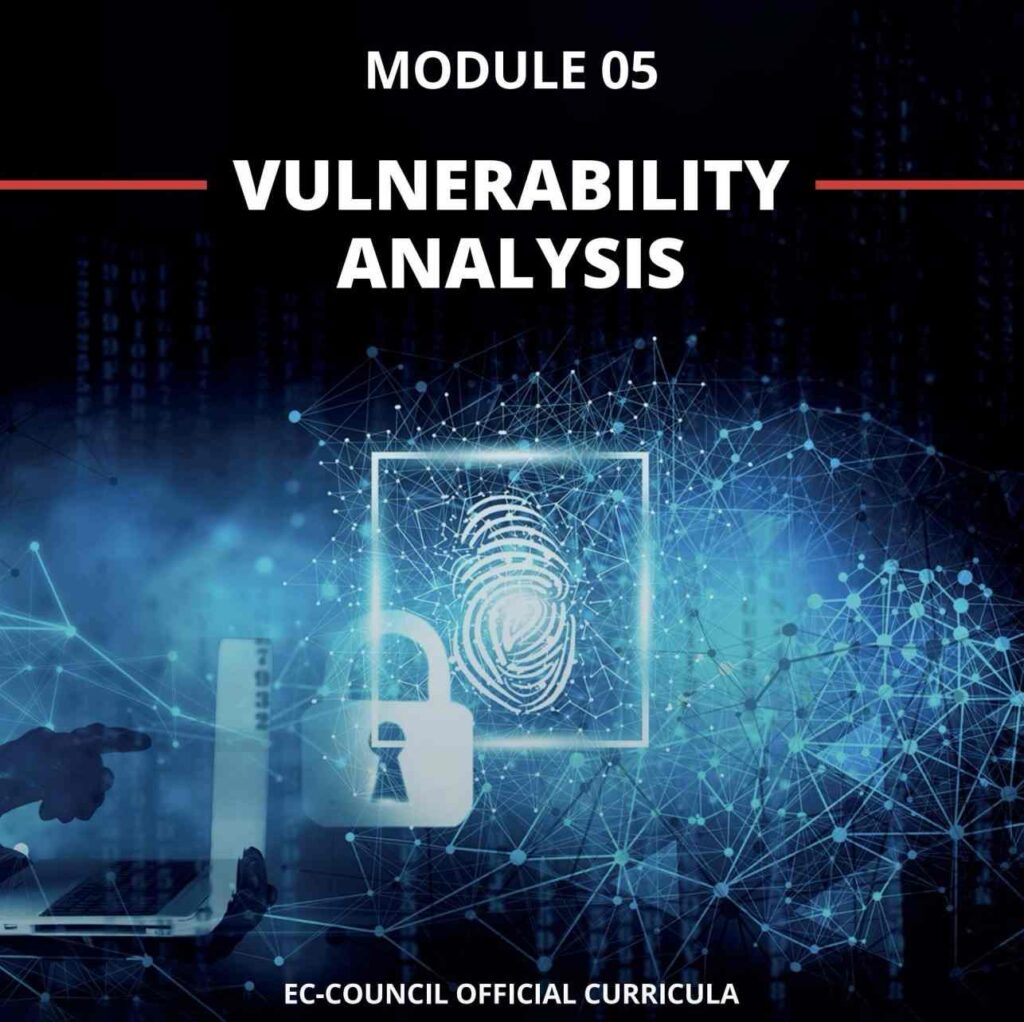CEH v12 Module 05 Vulnerability analysis is a crucial component of cybersecurity, aimed at identifying weaknesses and potential entry points that malicious actors could exploit in an organization’s network, communication infrastructure, and end systems.
Conducting a thorough vulnerability analysis helps organizations strengthen their security posture by addressing and mitigating these vulnerabilities.
Here’s a guide on how to perform vulnerability analysis:
Steps in Vulnerability Analysis:
- Define Scope:
- Identify the assets and systems within the scope of the assessment.
- Determine the specific goals and objectives of the vulnerability analysis.
- Asset Inventory:
- Compile a comprehensive inventory of all hardware, software, and network assets.
- Network Mapping:
- Map the network architecture to understand the relationships and communication pathways between devices.
- Identify Vulnerabilities:
- Utilize various methods, such as automated scanners, manual testing, and reviewing configurations, to identify vulnerabilities.
Types of Vulnerability Assessment:
- External Assessment:
- Focuses on identifying vulnerabilities from an external perspective, simulating attacks from the internet.
- Internal Assessment:
- Conducted from within the organization’s network, identifying vulnerabilities that could be exploited by an insider.
- Host-Based Assessment:
- Concentrates on vulnerabilities within individual systems, including servers, workstations, and other endpoints.
- Network-Based Assessment:
- Examines vulnerabilities in the overall network infrastructure, including routers, switches, and firewalls.
- Application Assessment:
- Analyzes vulnerabilities in software applications, both off-the-shelf and custom-built.
- Wireless Network Assessment:
- Focuses on identifying vulnerabilities within wireless networks, including Wi-Fi security flaws.
Vulnerability Assessment Tools:
- Automated Scanners:
- Tools like Nessus, OpenVAS, and Nexpose automate the discovery of vulnerabilities.
- Manual Testing Tools:
- Tools like Burp Suite, OWASP Zap, and Wireshark help in manual inspection and testing for vulnerabilities.
- Configuration Management Tools:
- Tools like Chef and Ansible can be used to ensure secure configurations.
- Web Application Scanners:
- Tools like Acunetix and AppSpider focus specifically on web application vulnerabilities.
- Network Mapping Tools:
- Tools like Nmap and Netcat assist in mapping and discovering network devices.
Best Practices:
- Regular Scans:
- Conduct vulnerability scans regularly to identify and address new vulnerabilities.
- Patch Management:
- Implement a robust patch management process to keep systems up-to-date.
- Incident Response Plan:
- Develop and maintain an incident response plan to address vulnerabilities promptly.
- User Education:
- Educate users about security best practices to minimize social engineering risks.
- Documentation:
- Maintain comprehensive documentation of vulnerabilities, assessments, and remediation actions.
Reporting:
- Prioritization:
- Prioritize vulnerabilities based on severity and potential impact.
- Recommendations:
- Provide clear recommendations for mitigating identified vulnerabilities.
- Executive Summary:
- Summarize findings for executive-level stakeholders.
- Actionable Steps:
- Include actionable steps for remediation and risk reduction.
By following these steps and best practices, organizations can significantly enhance their security posture and reduce the risk of cyber threats.
Keep in mind that vulnerability analysis is an ongoing process, and regular assessments are essential to adapt to evolving security landscapes.








